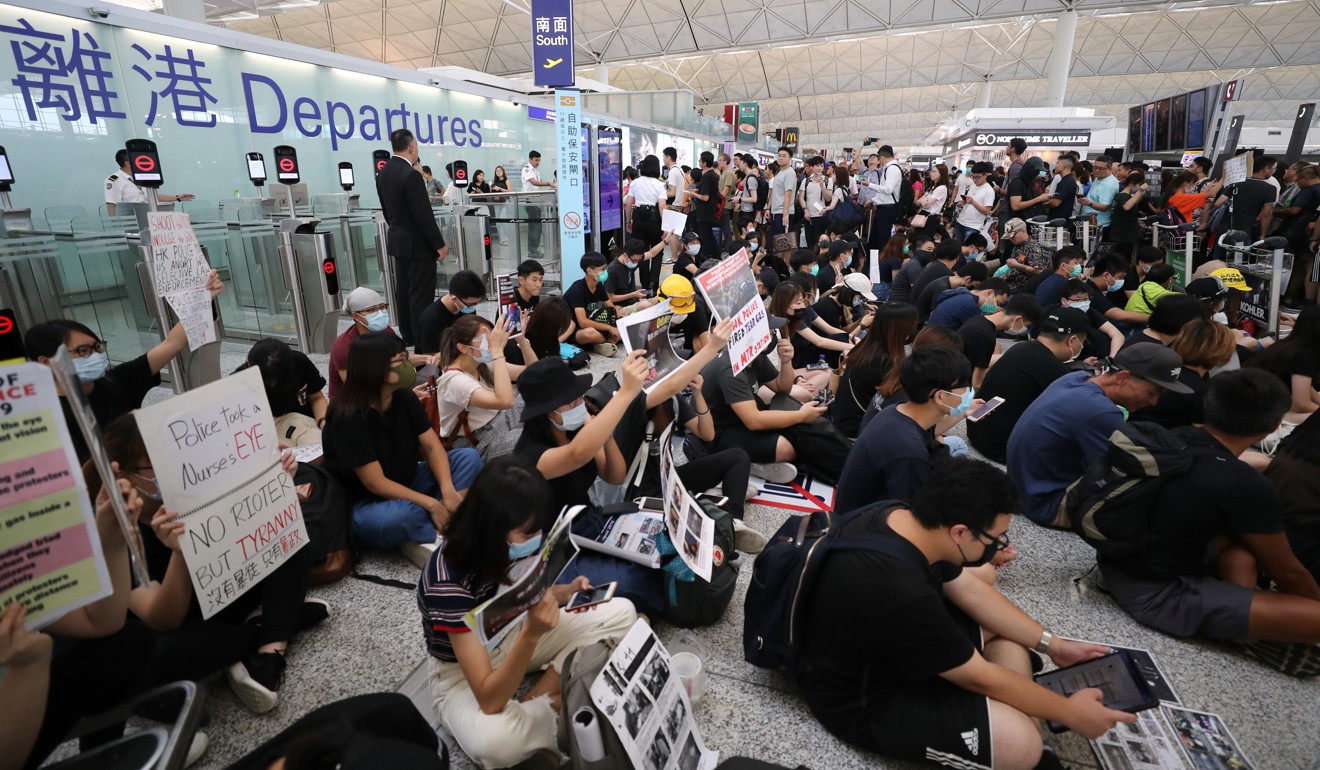
Hong Kong airport feels unrest-related slump, set for 2 million fewer travellers in 2019
- Whole-year drop estimated despite numbers being up in the first six months, before anti-government protests began
- And August brought the biggest year-on-year decline in monthly travellers in a decade
Hong Kong’s airport is set to handle 2 million fewer travellers this year than in 2018, as it feels the effects of anti-government protests in the city, according to a revised official forecast.
The unrest-related slump is particularly significant given that the travel hub’s passenger numbers had been growing in the first half of the year – up 1.03 million in the year to July against the same period of 2018.
Michael Yuen, general manager for airport and industry collaboration at Hong Kong International Airport (HKIA), told Air Transport World at a conference in Adelaide that there would no longer be a 3 per cent increase in traffic, as estimated, but a decrease of the same size, the first annual drop since 2009.
The two-runway airport, one of Asia’s busiest, handled 74.6 million passengers in 2018, meaning a 3 per cent decline would amount to 2.24 million fewer fliers.

The Airport Authority, which runs HKIA, also revealed its biggest year-on-year decline in monthly travellers in a decade, with a drop of 12.4 per cent – or 851,000 travellers – in August, typically a time of high demand.
The drop-off in September, typically a quieter month, “will not be as severe [as] in August”, Yuen said.
HKIA faces a battle to stop local and foreign airlines cutting flights, as carriers urge the operator to make it more affordable to fly to the city. Airlines have cut routes or switched to smaller planes in response to weak demand for travel to Hong Kong in light of the protests running since June 9, many of which have ended in violent clashes with police.
Protests and occupations have also disrupted the airport, leading to almost a thousand flight cancellations and delays.
Board of Airline Representatives chairman Ronald Lam Siu-por, who represents a coalition of more than 70 carriers, warned the government last week it should listen to their plea for smaller airport charges.
“Already we have seen a double-digit drop in passengers in August compared to last year and we expect this to worsen in the remaining months of the year,” said Lam, an executive at Cathay Pacific.
The Cathay Pacific Group and Hong Kong Airlines have cut routes and cancelled flights on an ad hoc basis in response to tepid demand.
Qantas and United Airlines are among major foreign airlines that have reduced capacity locally, by cutting routes or flying smaller planes.
HKIA’s operator was still optimistic in its latest long-term assessment.
Airlines ask Hong Kong to waive airport fees to ease protest crisis losses
Yuen said 2020 could bring a double-digit rebound in annual traffic, depending on when the political crisis eases.
But Luya You, an analyst from Bocom International, said the Airport Authority’s forecasts were premature, and the year-on-year drop could yet grow.
“It’s still a little too early to issue an accurate full-year forecast on 2019 traffic volume, as unrest in Hong Kong continues to evolve and the timeline remains largely uncertain.
“As a result, it’s difficult to say if the latest forecast of a [drop of about 3 per cent] will sufficiently account for the full-year impact of the anti-government protests,” she said.
The analyst added: “If local situations continue to worsen past current expectations, for example, the overall drop in traffic could exceed present forecasts significantly, in our view.”

The Airport Authority declined to elaborate on Yuen’s comments. “We will closely monitor the latest development and the situation, and will update our forecast accordingly from time to time,” a spokesman said.
Meanwhile, Hong Kong Airlines, the worst hit by the unrest among local airlines and the least financially stable, said it would cut senior management pay by 20 per cent for four months until the end of the year.
An unpaid-leave scheme would be rolled out, and the airline appealed for ground staff to take the offer from October until the end of the year. Pilots and flight attendants would get a separate plan.
Hong Kong Airlines staff face unpaid leave or reduced working hours
Staff at management level and above would be required to take four days’ unpaid leave and lower-ranked employees would be asked to take at least two days.
The carrier, backed by mainland conglomerate HNA Group, has already reduced capacity and flights, in response to weak travel demand.
But it said it would halt all non-essential projects and freeze headcount, in a move similar to that made by much larger hometown rival Cathay Pacific Group.

